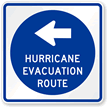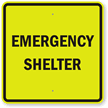Georgia makes pet evacuation SAFE
As hurricane season approaches, pet owners will have to make some tough decisions. Evacuating with pets during an emergency is often not an option, since most shelters do not take pets in. For Georgia residents, however, there is some respite.
Georgia’s new pet evacuation center
The SAFE center is the brainchild of George McCommon, currently its interim director. The facility is situated at Fort Valley State University. It is strategically located right in the middle of Georgia.
The center is near the crossroads of two major hurricane evacuation routes – one from Florida, the other from the Georgia coast. This will make it easy for owners to drop off their pets and then follow evacuation routes. McCommon says, “The center is specifically designed for 105 dogs, 80 cats, and 30-plus horses.”
Why pet evacuation is difficult
Most shelters, including the Red Cross, do not permit evacuees to bring in their pets. Lou Palm, a readiness coordinator with the Red Cross said, “A very diverse population comes to a Red Cross shelter. You’re going to have people with allergies to animals, people with outright fears of animals.”
Hotels that accommodate pets are in short supply in emergencies and are difficult for many to afford.
Lou Palm points out, “People will not leave if they think their pets are not going to be taken care of.” A Fritz Institute Survey revealed that 19% of affected residents did not evacuate during hurricane Katrina because they did not want to leave their pets behind.
At least 50,000 pets died because no emergency plans were in place to save them after Hurricane Katrina flooded huge swaths of the U.S. Gulf Coast in August 2005. Those who left their pets behind were emotionally traumatized, and abandoning tens of thousands of animals in one area led to health and safety risks.
The PETS Act requires states to have pet evacuation plans
The Pet Evacuation and Transportation Standards (PETS) Act of 2006 was introduced to help accommodate animal evacuees. The Act mandates states and cities to have pet evacuation plans in place to receive Federal Emergency Management Agency (FEMA) funding. These plans must cover both household pets and service animals.
Some states responded by converting buses in mobile animals shelters. Others made deals with hotels so that they would take in pets they would not otherwise allow. Georgia came up with the SAFE Center.
Ensure your pet’s safety during an emergency evacuation
A disaster plan will help you save your pet in case of emergency.

A pet rescue sticker can alert emergency responders and ensure your pet’s safe evacuation (image by www.petrescuestickers.com).
- Contact your veterinarian for a list of boarding facilities for pets.
- Identify hotels and motels outside your disaster area that allow pets in emergencies.
- Ask friends or relatives outside the affected area whether they can shelter your animals.
The ASPCA suggests that you get a rescue alert sticker to let people know that you have pets. Ensure that the sticker has your pet’s details, your vet’s phone number, and is visible to relief workers. If you have already evacuated your pets, write “EVACUATED” on the sticker so that rescue workers don’t waste time looking for them.














